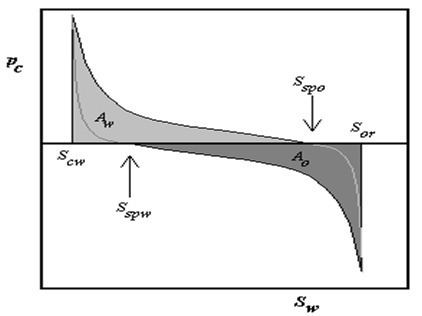 | ||
The Amott test is one of the most widely used empirical wettability measurements for reservoir cores in petroleum engineering. The method combines two spontaneous imbibition measurements and two forced displacement measurements. This test defines two different indices: the Amott water index (
Amott–Harvey index
The two Amott indices are often combined to give the Amott–Harvey index. It is a number between -1 and 1 describing wettability of a rock in drainage processes. It is defined as:
These two indices are obtained from special core analysis (SCAL) experiments (porous plate or centrifuge) by plotting the capillary pressure curve as a function of the water saturation as shown on figure 1:
with
with
A rock is defined as:
